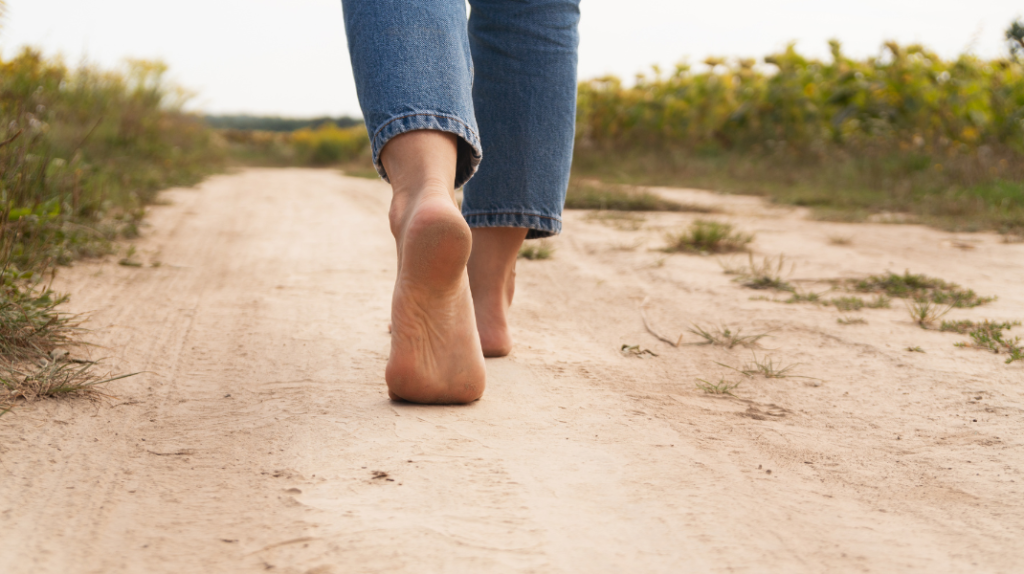Rediscover Yourself Amidst Life’s Chaos

In the hustle of daily life, it’s easy to lose yourself. Between demanding careers, adult children and/or grandchildren, and caring for aging parents, finding time for yourself can feel impossible.
But there’s a transformative practice that can help you reconnect with your core self: Rewilding.
To Rewild yourself is about rediscovering your innate nature, your wild essence. It’s not just a retreat into the wilderness, but a return to your inner wilderness. This journey is about peeling away the layers of societal expectations, responsibilities, and roles that have accumulated over the years. It’s about listening to the whispers of your soul and honoring your true self.
Start with Nature
Start with small steps. Spend time in nature—walk barefoot on the grass, breathe in the forest air, or simply sit by a stream. Nature has a unique way of grounding us and offering a sense of peace and clarity. Consider regular hikes, nature walks, or even gardening as ways to connect with the earth. These moments in nature can serve as a reminder of the simplicity and beauty of life, helping you to slow down and appreciate the present. Rewild yourself with the wild around you!
Revive Old Passions
Embrace creative pursuits that you once loved but set aside, like painting, dancing, or writing. These activities can reignite your passions and remind you of who you are beyond your roles and obligations. Take a class in something that has always intrigued you or start a small project that brings you joy. The act of creating can be incredibly therapeutic and fulfilling.
Physical Self-Care
To Rewild yourself also means caring for your physical self. Prioritize nourishing foods, regular movement, and ample rest. Listen to your body’s needs and honor them without guilt.
This self-care is not an indulgence; it’s essential for maintaining your vitality and connection to your core.

Explore different types of physical activity that resonate with you, whether it’s yoga, tai chi, or even dance. The goal is to find joy in movement and to reconnect with your body in a positive, loving way. Radical Wellness is a way of life!
Mindfulness Practices
Practice mindfulness. Meditation, journaling, or simply taking a few minutes each day to breathe deeply can help you stay connected to your inner self. These practices can serve as a reminder that, despite the chaos around you, there is a wild, unchanging essence within. Start a daily journal where you can express your thoughts and feelings freely. Meditation apps or guided sessions can be particularly helpful if you’re new to the practice.
Set Boundaries
Learn to set boundaries. It’s essential to carve out time for yourself amidst your responsibilities. Communicate your needs to your family and loved ones. It’s okay to say no to certain obligations that drain your energy and take away from your personal growth. Setting these boundaries will allow you the space and time to focus on rewilding yourself.
Connect with Like-Minded Individuals
Surround yourself with people who support your journey. Seek out communities or groups that resonate with your rewilding goals. Sharing this experience with like-minded individuals can provide encouragement and inspiration. Join local meetups, online forums, or workshops focused on personal growth and nature connection.
Simplify Your Life
Consider simplifying your life. Declutter your living space and remove things that no longer serve you. A simpler, more organized environment can lead to a clearer mind and more focused energy. This process of decluttering can be incredibly freeing and can help you feel more in control of your surroundings.
Practice Gratitude
Incorporate a daily gratitude practice. Taking a few moments each day to reflect on what you are thankful for can shift your mindset and help you focus on the positives in your life. This practice can bring a sense of peace and fulfillment, reminding you of the abundance around you.
Reconnect with Your Inner Child
Reconnect with your inner child. Engage in activities that you loved as a child—whether it’s playing a musical instrument, drawing, or simply daydreaming. These activities can unlock a sense of joy and wonder that you may have forgotten.
Explore Rewilding Retreats

Consider attending a rewilding retreat. These retreats are specifically designed to help you disconnect from the chaos of daily life and reconnect with your inner self and nature.
They offer structured programs that may include activities like wildlife interaction, mindfulness exercises, yoga, and creative workshops.
The immersive experience in a supportive environment can accelerate your journey to self-discovery and provide tools and practices to integrate into your everyday life. Research and find a retreat that aligns with your interests and goals, and take the plunge into a transformative experience.
Rewilding yourself is a journey back to your roots, to the person you were before life’s demands took over. It’s about reclaiming your joy, passions, and sense of wonder. Embrace this path, and you’ll find that reconnecting with your core nature brings profound fulfillment and balance. Remember, this journey is personal and unique to you, so honor your own pace and preferences. Rewilding is not a destination but an ongoing process of self-discovery and growth.

Isn’t it time to leave burnout behind and lead a life that makes YOU a priority? Consider rebooting your mind and body with one of our wellness retreats! Designed specifically to immerse you in an environment that takes you out of your daily grind, you will be able to focus on crafting your life in a way that honors your family and career while carving out time to pursue interests that excite you so you can feel balanced, fulfilled, and calm. Get on the info list so you know what is happening, when, and where!
P.S. Let’s get to know each other better!! Follow us on Instagram, Facebook, YouTube, LinkedIn, and Pinterest, and join the LAYLO Shala to get the latest news and insider goodies 😍



















